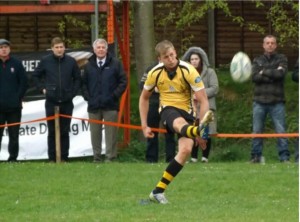 Many coaches are of the belief that team training sessions are not the time to focus on the individual kicker because there is an insufficient amount of time to focus on the skills of one player.
Many coaches are of the belief that team training sessions are not the time to focus on the individual kicker because there is an insufficient amount of time to focus on the skills of one player.
This strikes me as odd for a few reasons. Whilst I accept that you can look at kicking as an individual skill, the way that it fits into the whole team’s performance is massive.
Let’s take a look at the times that a kicker must deliver in a match:
1. Kick-Off
From the very first whistle you want a kick-off in which the chasing pack know where the ball is likely to land and the kick is at a height which gives them time to get to it.
2. Mid-Game
Throughout the match, the kicker may need to kick a strategic penalty kick to put the ball into touch. Alternatively, a kicker may need to kick an important penalty between the posts to attain some vital points. A good kicker can also work wonders to take the pressure off and get a team out of its own 22.
3. Conversion
Kickers need to be able to kick under pressure following a try to score important 2 point conversions, which are sometimes the difference between winning and losing.
Building Skills Early On
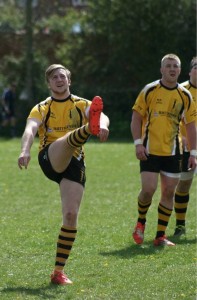 Although kicking doesn’t start in the game very early in mini rugby, watch what happens when kids find themselves on a pitch with a bag of balls.
Although kicking doesn’t start in the game very early in mini rugby, watch what happens when kids find themselves on a pitch with a bag of balls.
I will guarantee you that they will have a great time kicking them around!
So, just because it’s not part of the competitive game at an early stage does not mean that coaches shouldn’t start helping their players build this very important skill for later on.
I would always spend a couple of minutes just looking at the fundamental parts of these attempts and offer a few pointers, whether how to hold the ball for a drop kick, stepping through the kick or looking at place kick mechanics.
Training Sessions
For players that are at an age where kicking is required, I believe the following two-part coaching approach to practice kicking is best: (1) both before and after the session and (2) during the session itself.
This approach looks at how the players manage the skill both when they are fresh and also when they are fatigued at the end of the session.
This is essential as we need these kickers to perform as well at 80 minutes as they did at 2 minutes into the game.
Coaching these players individually before or after sessions allows you to understand the mindset of the players stepping into this role and coaching them mid-session allows you to tie their role with the team as a whole, which is key to creating a successful team that works well together.
This method obviously takes a significant amount of individual commitment both on the part of the player and the coach, but I think it is well worth the effort.
Example Before/After Training Sessions
One of the sessions I used at the start (after the players had warmed up sufficiently) was to set out cones 5 metres, 2 metres and 1 metre from the goal posts in the in-goal area and have the kicker try to drop kick the ball over the cross-bar and into a circle of cones on the other side (roughly where the chasers would be). This session helps the kicker to practice height, hang time and accuracy in one drill.
Place-kicking is also a good skill to practice at the start and end of a session as it is realistic that players will need to kick at the end of a 80 minute match when their legs sore and their mind is tired.
Example Mid-Training Sessions
 I also try and fit kicking into the overall session.
I also try and fit kicking into the overall session.
The team I coached had 3 kickers and we would do a session where back three have to recover a kick and counter attack. I would get the kickers to practice kicking into different areas of the field from hand or cones and get the back three to react to the kicks.
You can add a defensive line into this which the kick feeds into to ensure the whole squad get a game sense practice whilst ensuring the kickers get some focus too.
Also, this can be expanded into line-out drills (in the team’s own 22). The drill works like this: Catch, drive, set, 9 to 10 and clear into touch and work up the field.
There are also many options to practice kick-offs mid-session involving the whole team. We practiced with 9 variations off of a kick-off which split the field into 9 areas and either sent a chaser or worked on line-speed to gain ground.
However, this only works if the kicker can position the ball in the right area with the right amount of hang time on it.
Another thing you can do it pull a kicker out of a water break and give them a conversion to make. This replicates a game sense scenario whereby the player has to make a kick under pressure.
Individual Practice and Analysis
Individual kicking practice outside of a training session and analysis undertaken by the players themselves is also very useful.
Give the players a bag of balls and a few cones and they can continue to practice the above drills when they have time on their own.
Analysis can add an important component to perfecting kicking technique as well. For example, having the players record their kicking style in slow motion and analyze it with a coach can be very helpful with place-kicking and other kicks to optimise form.
Conclusion
Kickers (as with hookers and throwing or scrum-halfs and passing) need to take time to practice this as an individual skill but the more we as coaches can stitch this into our sessions the better our kickers will become and the better our teams will work as a cohesive unit when it comes time for kicking in game scenarios.








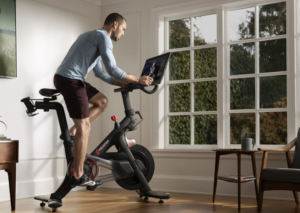 When most people hear the word “Peloton” they think of an expensive black bike with shiny red buttons and that controversial commercial where the husband gifted his wife a Peloton for Christmas.
When most people hear the word “Peloton” they think of an expensive black bike with shiny red buttons and that controversial commercial where the husband gifted his wife a Peloton for Christmas.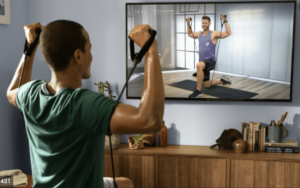 If the app interests you, Peloton is currently offering a 30 day FREE TRIAL, so why not give it a try? Check it out
If the app interests you, Peloton is currently offering a 30 day FREE TRIAL, so why not give it a try? Check it out 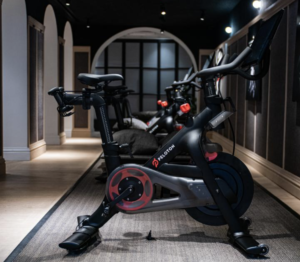

 This article would not be complete, however, if we did not acknowledge some of the delivery issues that have been plaguing Peloton over the last year. Most of the delivery issues seem to affect U.S. deliveries, however, the UK deliveries have been affected as well.
This article would not be complete, however, if we did not acknowledge some of the delivery issues that have been plaguing Peloton over the last year. Most of the delivery issues seem to affect U.S. deliveries, however, the UK deliveries have been affected as well.







